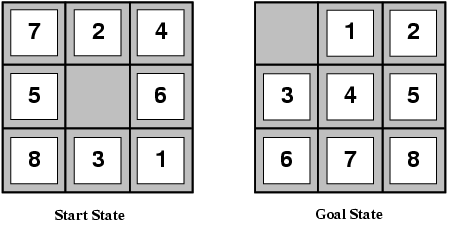Consider two heuristics $h1(n)$$h_1$ and $h2(n)$$h_2$ defined for the 15 puzzle problem as:
- $h1(n)$=number$h_1(n)$ = number of misplaced tiles
- $h2(n)$=total$h_2(n)$ = total Manhatten distance

Could anyone tell why $h2(n)$$h_2$ is a better heuristic than $h1(n)$.I$h_1$? I would like to know why the number of nodes generated for $h1(n)$$h_1$ is greater than that for $h2(n)$$h2$.Also Also why going deeper into the state space the number of nodes increase drastically for both heuristics.
Source: Informed Search
